DP Robbie Ryan ISC BSC conjured up colorful, atmospheric looks for 'Poor Things' using KODAK 35mm B&W, color negative and EKTACHROME Reversal film stocks
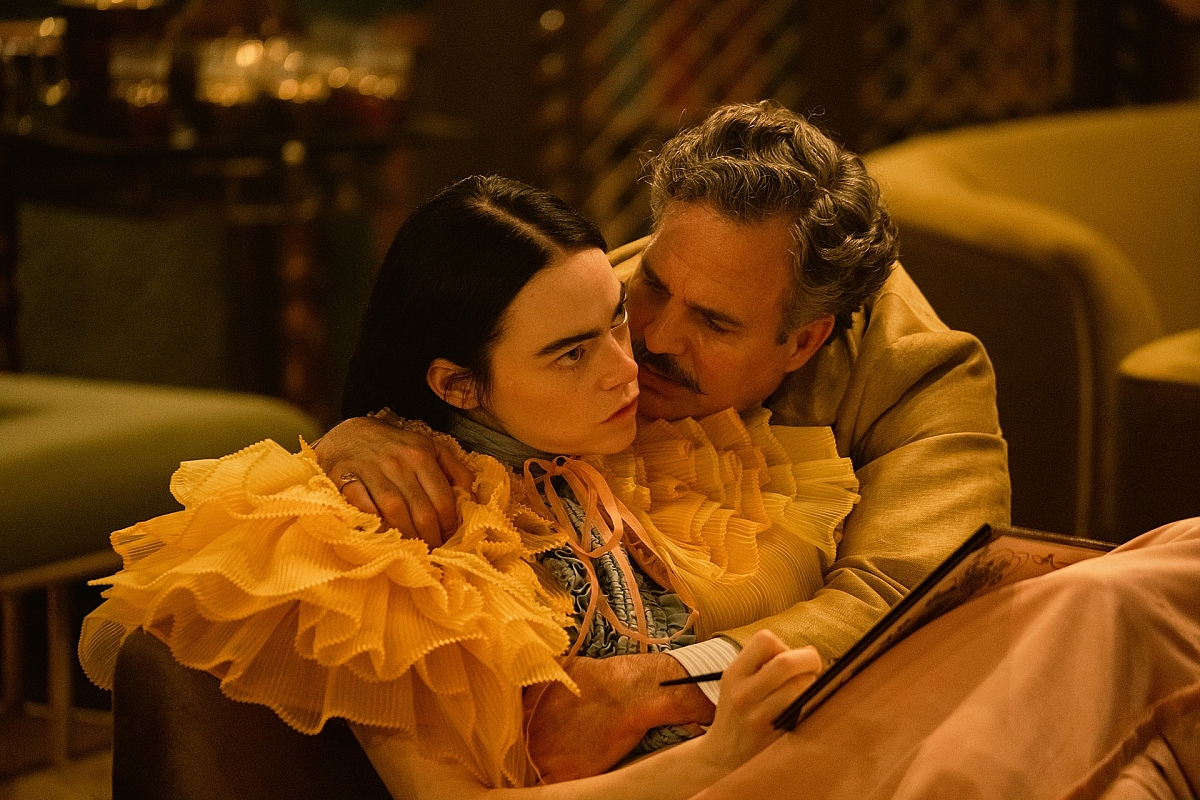
Emma Stone and Mark Ruffalo in POOR THINGS. Photo by Atsushi Nishijima. Courtesy of Searchlight Pictures. © 2023 Searchlight Pictures. All rights reserved.
Described as "one of the most visually imaginative and energetic Hollywood comedies in years," Poor Things, directed by Yorgos Lanthimos, looks set for a high-profile run during the 2024 awards season.
The film was shot by cinematographer Robbie Ryan ISC BSC, Oscar-nominated for his work on Lanthimos' bawdy and frequently foul-mouthed Queen Anne drama, The Favourite, with the DP using KODAK 35mm B&W, color negative and EKTACHROME Reversal and film stocks, to depict another disruptive period drama, but this time set in Victorian London.
Poor Things is the first major feature production to shoot on 35mm EKTACHROME and develop it as reversal via the E-6 process, since its reintroduction in 2021. The film also joins Oppenheimer (DP Hoyte Van Hoytema FSF NSC ASC), Maestro (DP Matthew Libatique ASC) and Asteroid City (DP Robert Yeoman ASC) in the list of recent feature films made using a storytelling hybrid of KODAK 35mm color and B&W stocks.
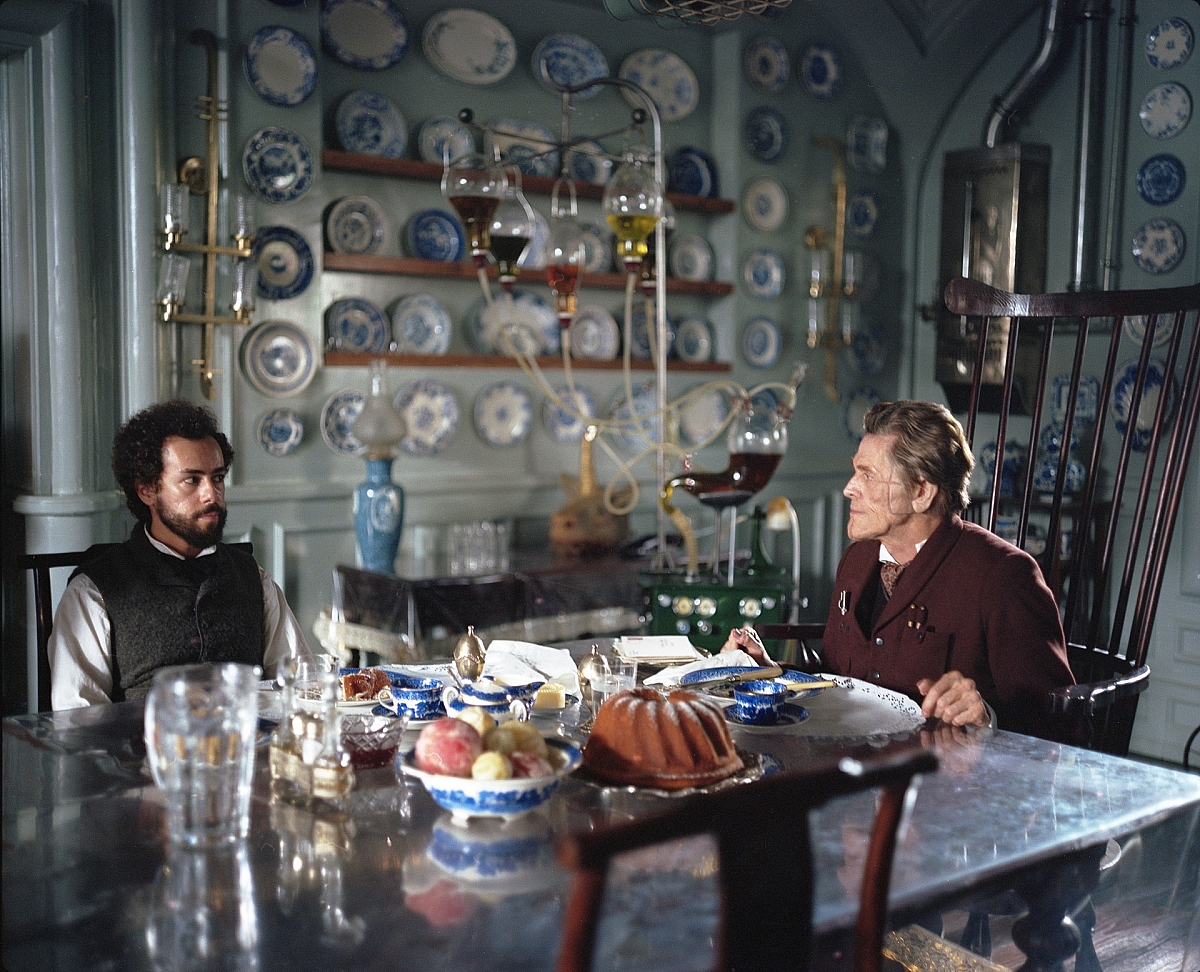
Ramy Youssef and Willem Dafoe in POOR THINGS. Photo by Yorgos Lanthimos. Courtesy of Searchlight Pictures. © 2023 Searchlight Pictures. All rights reserved.
Starring Emma Stone, Willem Dafoe, Mark Ruffalo and Ramy Yousef, Poor Things was adapted for the screen by Lanthimos and co-writer Tony McNamara from the 1992 novel of the same name by Scottish author and illustrator Alasdair Gray.
The story follows Bella Baxter, a young woman who is brought back to life by her protective guardian, the unorthodox scientist Dr. Godwin Baxter. Although initially naïve and childlike, Bella eagerly learns about the world around her after eloping with Duncan Wedderburn, a slick, debauched lawyer, as they embark on a whirlwind adventure across seas and continents. Free from the prejudices of the times, Bella grows steadfast in a purpose to stand for equality and liberation during her odyssey of self-discovery and sexual liberation.
Produced by Film4, Element Pictures, TSG Entertainment and Searchlight Pictures, the film won the prestigious Golden Lion for Best Film at the 2023 Venice Film Festival receiving rave reviews for its direction, central performances, production design and Ryan's evocative cinematography. It was also selected as the opening film of the 2023 Camerimage Film Festival, in Toruń, Poland.
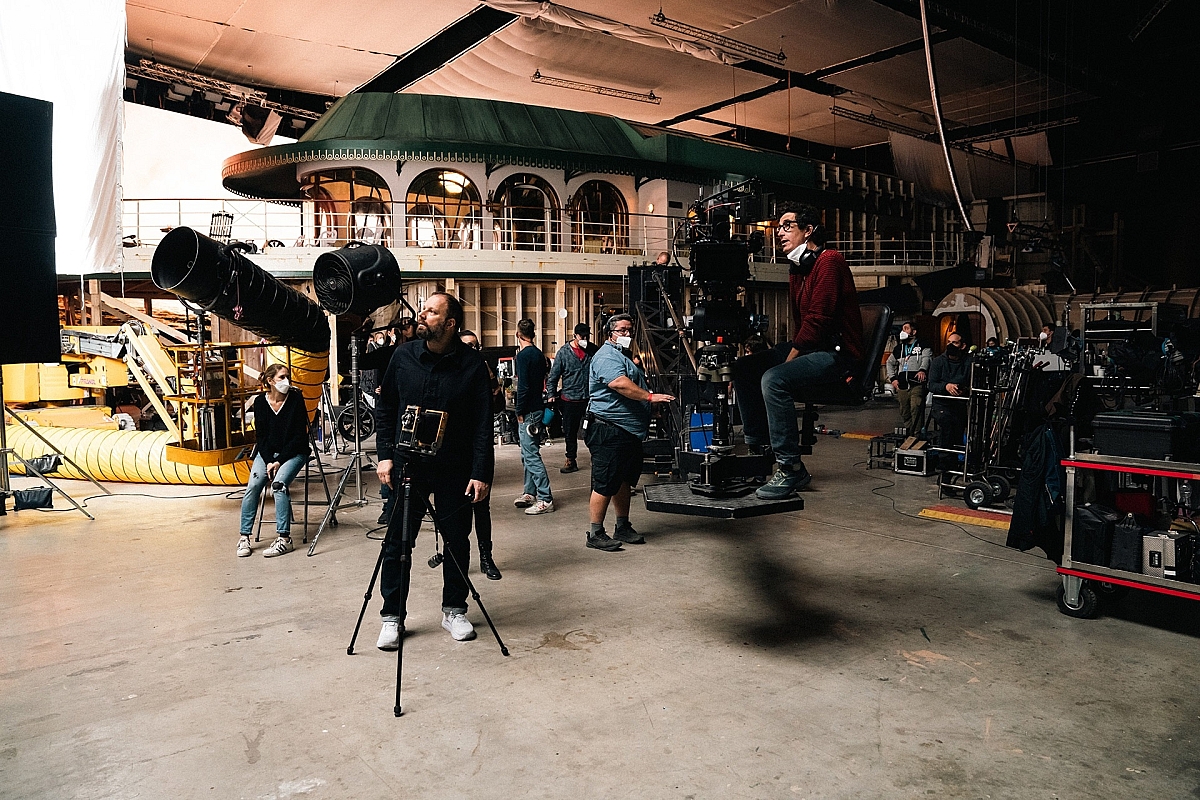
DP Robbie Ryan ISC BSC at the camera during production on POOR THINGS, directed by Yorgos Lanthimos. Photo by Atsushi Nishijima. Courtesy of Searchlight Pictures. © 2023 Searchlight Pictures. All rights reserved.
While some DPs actively avoid reading novels from which scripts are subsequently adapted for fear of tainting their cinematographic approach to a project, Ryan says he enjoyed reading Gray's original novel. Rather than affecting his aesthetic sensibilities, Ryan believes this gave him more background and detail to consider when it came time to depicting Lanthimos' singular take of Bella's physical and emotional journey inside a Gothic fairytale.
"While the story is inspired by Alasdair Gray's amazing original novel, Yorgos and Tony essentially created their own universe for the film, for sure," says Ryan. "I remember Yorgos telling me that he had visited Alasdair Gray a decade or so ago, to talk about making a film from the book and to negotiate the filming rights. It wasn't a project that just landed on his lap, it was something he'd wanted to do for a long time.
"The premise of the film, about re-activating a dead woman with her unborn baby's brain, was a pretty unusual scenario to start from, and knowing his work with Tony, and their kind of humour, I knew it would be an ambitious take about sexual, emotional and spiritual awakening, with a lot of layers.
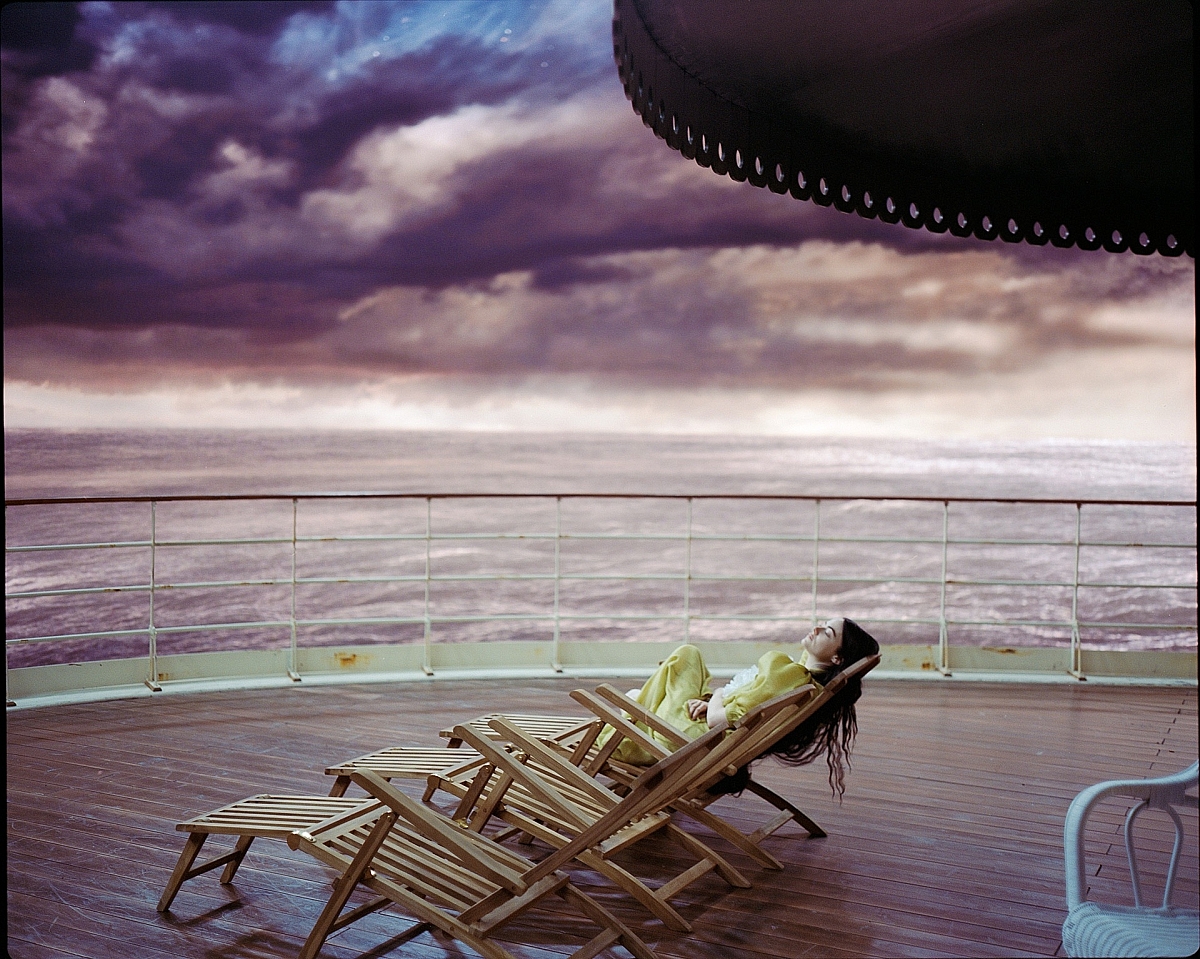
Emma Stone in POOR THINGS. Photo by Yorgos Lanthimos. Courtesy of Searchlight Pictures. © 2023 Searchlight Pictures. All rights reserved.
"When I read their script, I saw it as a fantastical slant on a fantastical story. The sets had a ramped-up reality, with a distinct richness to them, presenting the world of Bella Baxter in an imaginative way, with an added dash of madness.
"Portraying her world as bold and colorful, seeing it as if for the first time, was really the only way this story could get told. I think this approach gave us license to really open up the palette and the style of framing."
Poor Things was filmed in August 2021 in Hungary, mainly at Origo Studios in Budapest, where elaborate interior sets, created by production designers Shona Heath and James Price, were built on stage, along with exteriors of Paris and Lisbon on different backlots.
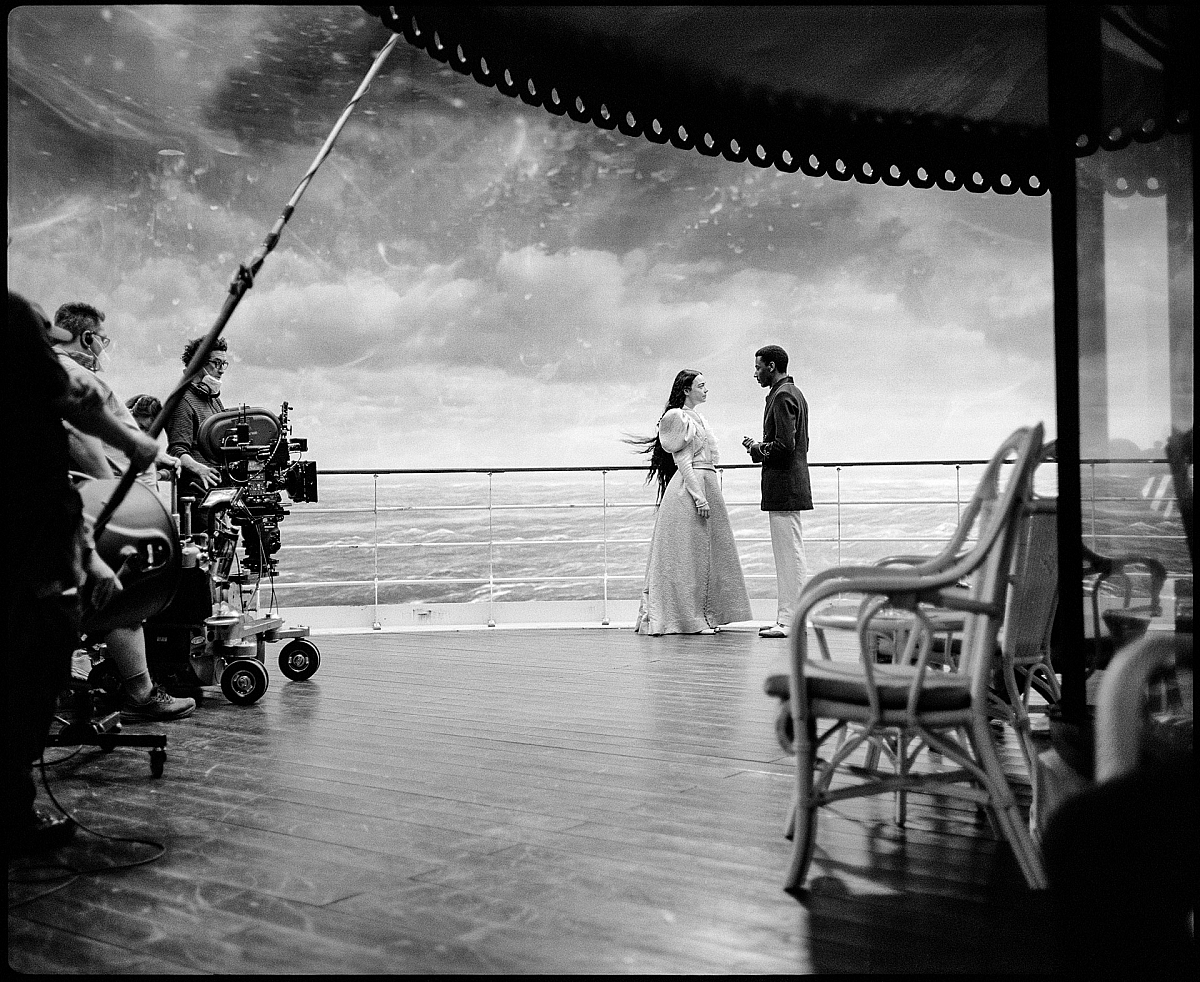
DP Robbie Ryan ISC BSC at the camera, filming during production on POOR THINGS, directed by Yorgos Lanthimos. Photo by Atsushi Nishijima. Courtesy of Searchlight Pictures. © 2023 Searchlight Pictures. All rights reserved.
"Yorgos is a big advocate for shooting on film," Ryan says, "I have been really lucky to have shot a lot of films on film over the last 15 years and am always very happy to shoot on film when I get the opportunity."
Ryan's previous celluloid credits are extensive: Andrea Arnold's Fish Tank (2009) and Wuthering Heights (2011); Noah Baumbach's The Meyerowitz Stories (2017) and Marriage Story (2019); a clutch of features for Ken Loach, including I, Daniel Blake (2016), Sorry We Missed You (2019) and The Old Oak (2023); plus Catch Me Daddy (2014, dir. Daniel Wolfe) and I Am Not A Serial Killer (2016, dir. Billy O'Brien), were all variously captured on 35mm and/or 16mm film.
"I was delighted to learn that Yorgos wanted to shoot Poor Things on 35mm film, although, as with The Favourite, the big thing again for me was getting inside his particular vision for the production," says Ryan.
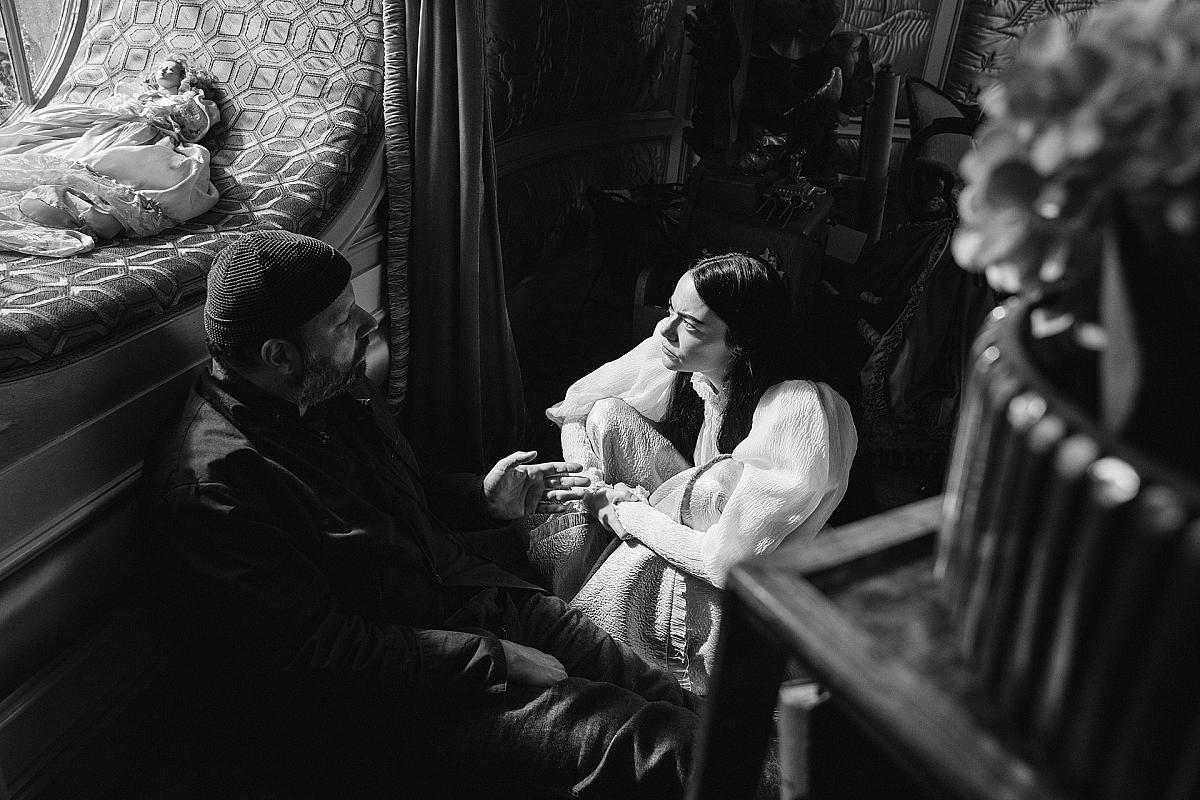
Director Yorgos Lanthimos and Emma Stone on the set of POOR THINGS. Photo by Atsushi Nishijima. Courtesy of Searchlight Pictures. © 2023 Searchlight Pictures. All rights reserved.
"Yorgos has a unique vision for every film he makes. For him, Poor Things was not so much a costume drama, it was more an enthralling character-driven story that he wanted to explore in his own particular visual way. Shooting on film, using zoom and wide lenses, along with fluid camera movement, were all of great importance to him as part of the visual aesthetic on this production."
With this in mind, Ryan absorbed a number of references provided by Lanthimos. Chief amongst these were films by Rainer Werner Fassbinder infusing Hollywood melodrama with avant-garde, kinetic filming techniques such as zooms lenses, and heightened-reality moments in movies, including And the Ship Sails On (1983, dir. Federico Fellini, DP Giuseppe Rotunno AIC), set aboard a luxury cruise liner. A further inspiration was Bram Stoker's Dracula (1992, dir. Francis Ford Coppola, DP Michael Ballhaus ASC) for its photographic dexterity, especially of miniatures, and general spooky atmosphere.
After much discussion with Lanthimos and extensive testing, Ryan went with ARRICAM LT and ST 35mm film cameras, framing in 1.66:1 aspect ratio. He selected an array of lenses that would support Lamthimos' desire to introduce zooms into the cinematic language of the movie, together with ultra-wide glass that would provide fantastical views on sets and faces, plus vintage optics that support a gothic air in the portraiture.
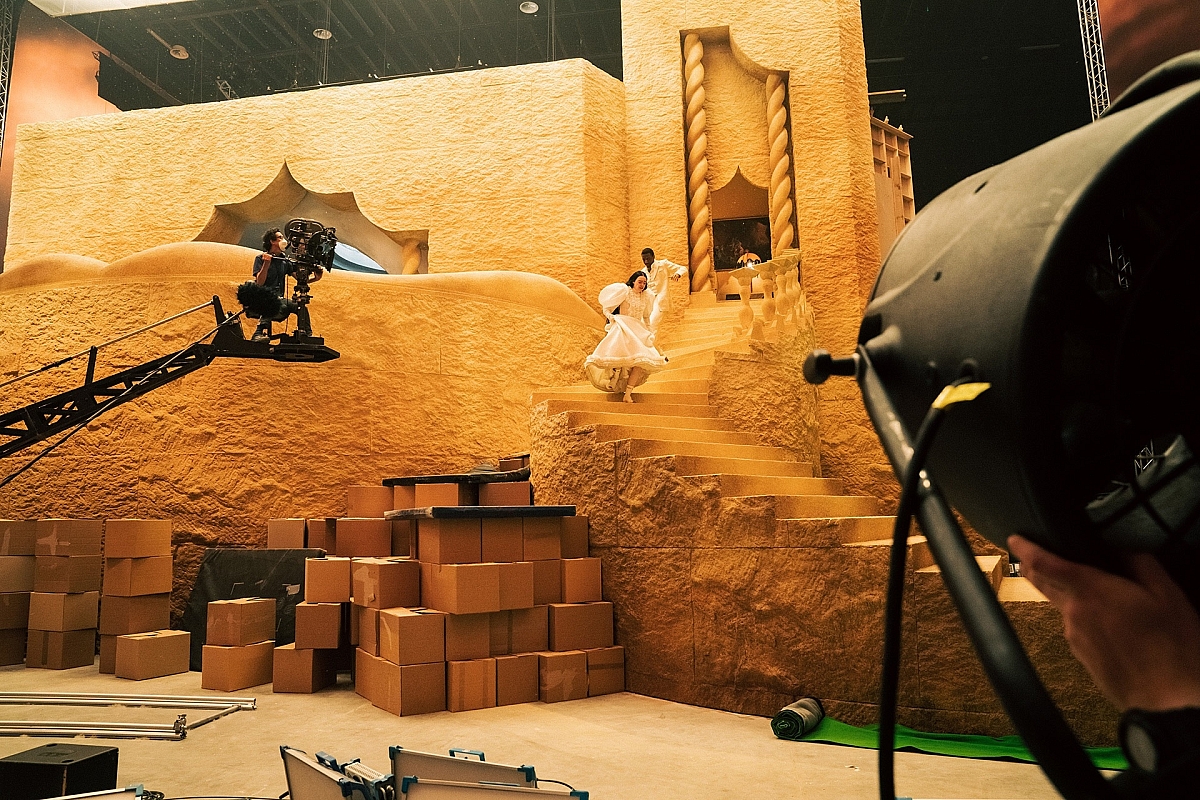
DP Robbie Ryan ISC BSC at the camera, filming during production on POOR THINGS, directed by Yorgos Lanthimos. Photo by Atsushi Nishijima. Courtesy of Searchlight Pictures. © 2023 Searchlight Pictures. All rights reserved.
These included Nikon, Angenieux Optimo and Zeiss Master Zooms, an ultra-wide PL-mount Optex 4mm fisheye, designed for 16mm/S16mm cinematography, that opens up to T2, plus antique 58mm and 85mm Petzvals.
The mainstay of the camera package was provided by ARRI Rental Budapest, under the auspices of head of camera Eszter Farádi, who Ryan remarks "was so knowledgeable and helpful to us." The Petzval lenses came through True Lens Service (TLS) in the UK.
"Technically, building zooms so much into the fabric of the visual storytelling was a new thing for me," admits Ryan. "Yorgos hates the idea of conventional film coverage. So, we blocked scenes with all sorts of dolly and crane moves that, for example, started on a close-up, zoomed back and then tracked over to a different character, which might perhaps then intercut with an extreme wide. The Zeiss 16.5 to 110mm Master Zoom is ridiculously big but has a sharpness and clarity that was perfect for our framing purposes on 35mm film, and it became one of our workhorses. This way of working with the zooms worked for a good many certain scenes but not in others when we'd just shoot wide with a zoom.
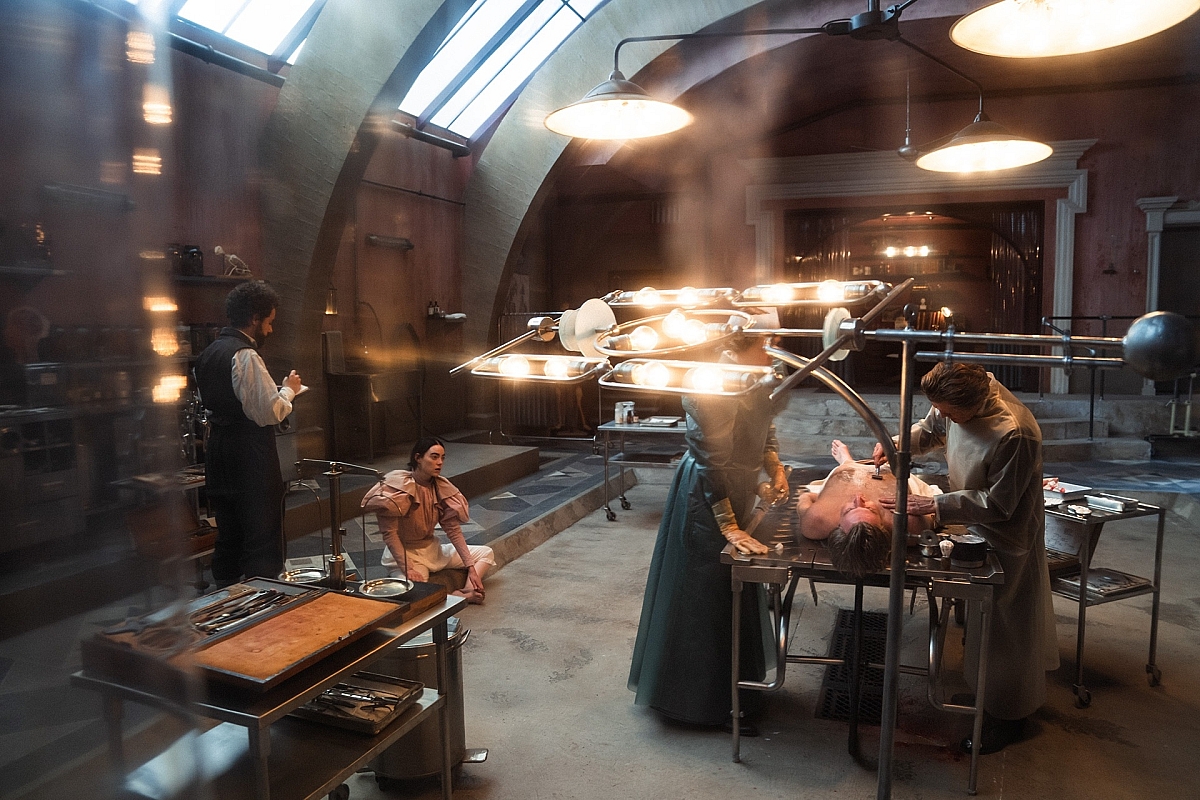
(From L-R): Ramy Youssef, Emma Stone, Vicki Pepperdine and Willem Dafoe in POOR THINGS. Photo by Atsushi Nishijima, Courtesy of Searchlight Pictures. © 2023 Searchlight Pictures. All rights reserved.
"However, If the moment needed something a bit more mad, we'd pop the Optex 4mm on the camera. As it's designed for 16mm/S16mm cinematography, it's the wrong lens for the 4-perf film 35mm format we were shooting. But it gave a lovely vignette with dark edges, a kind of porthole into another world, sharp on center, with gradual fall off towards the edges, that Yorgos really liked.
"It does not bulge and bend the image so much as the 6mm PV lens we used on The Favourite, but has a huge depth-of-field, where pretty much everything in the frame was in focus from a face or object just a few inches in front of the lens right out to infinity.
"The Petzvals are really beautiful, the edges are quite extreme, and the focus is in the dead center, so you feel like you're in a vortex, and they were perfect for the portraiture work."
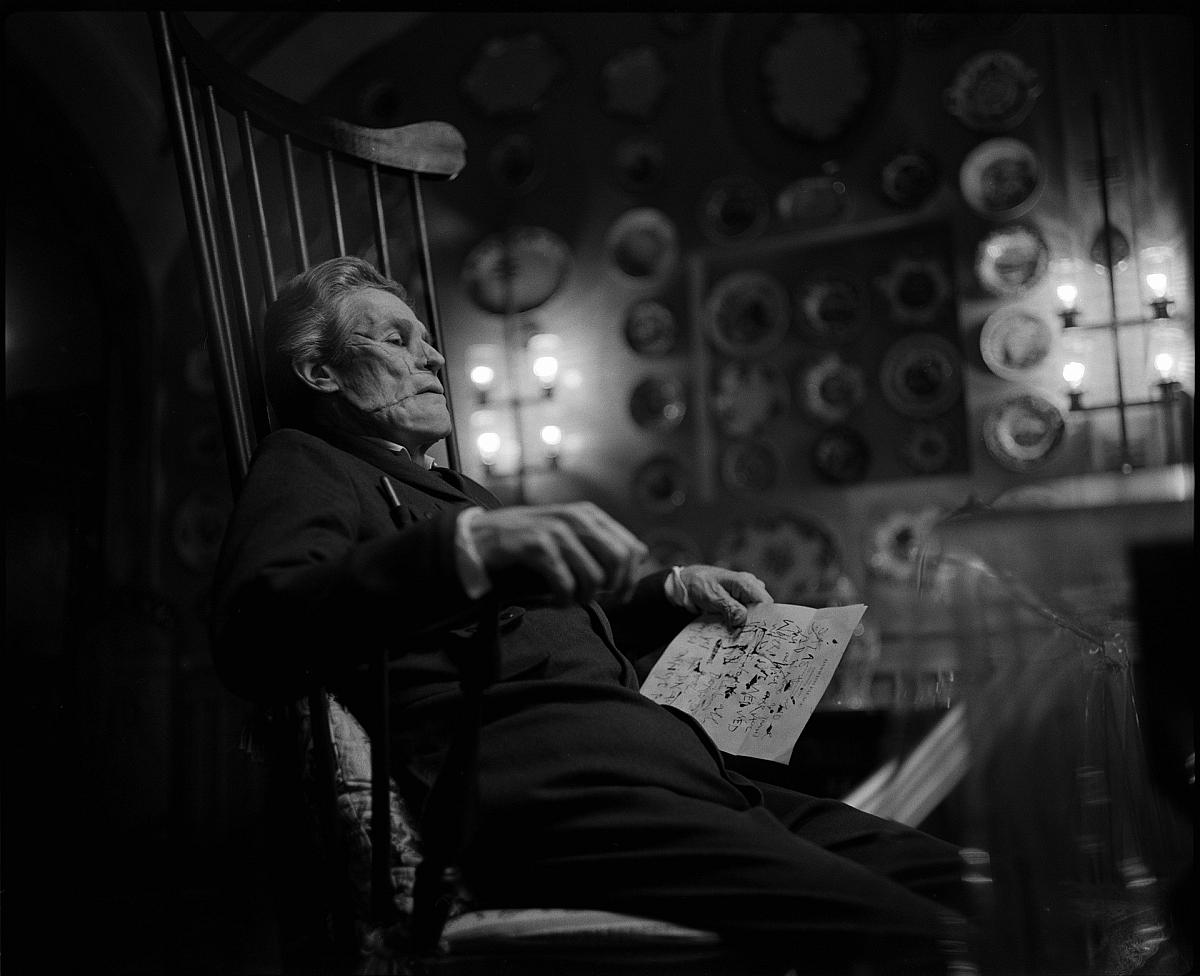
Willem Dafoe in POOR THINGS. Photo by Yorgos Lanthimos. Courtesy of Searchlight Pictures. © 2023 Searchlight Pictures. All rights reserved.
As with other directors who like to make the most of the immersive quality of film, Lanthimos shot parts of Poor Things using a VistaVision camera – such as the sequence in which Bella is reanimated – where the 35mm negative film is horizontally-oriented in the camera gate, and the 8-perf frame width conveniently offers 1.66:1 aspect ratio and double the size of a standard 35mm film, yielding more details in the negative.
Ryan selected EASTMAN DOUBLE-X Black & White Negative Film 5222 for the movie's opening B&W sequences, KODAK EKTACHROME Color Reversal Film 100D 5294 for Bella's elopement and adventures with Wedderburn, and KODAK VISION3 500T Color Negative Film 5219 for the film's denouement.
"The DOUBLE X 5222 stock has a superb scale of tonal contrast and grain, and it was a real joy to shoot in B&W," says Ryan. "Of course, the 500T is such a versatile stock that you can use for all sorts of interior/exterior day/night situations.
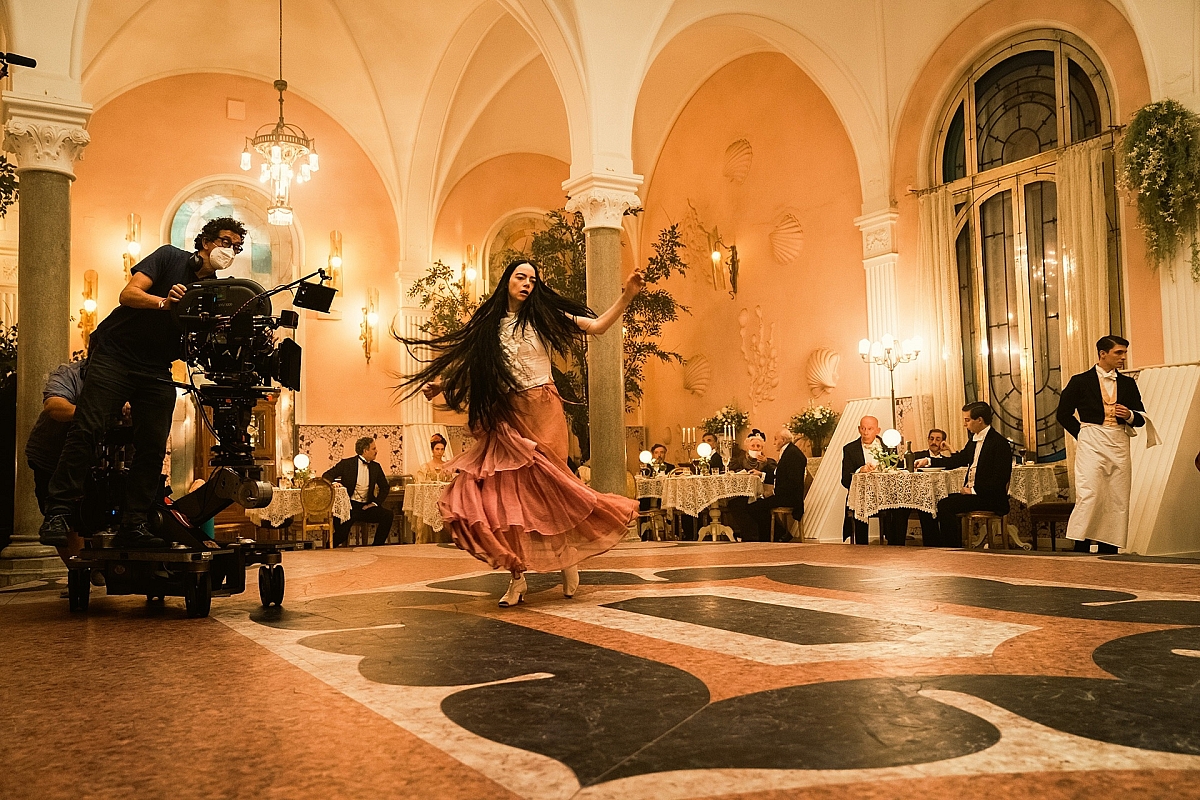
DP Robbie Ryan ISC BSC at the camera, filming Emma Stone, during production on POOR THINGS, directed by Yorgos Lanthimos. Photo by Atsushi Nishijima. Courtesy of Searchlight Pictures. © 2023 Searchlight Pictures. All rights reserved.
"Yorgos is always willing to try new things and really liked idea of the saturated color palette and contrast that come from the wide dynamic range of the EKTACHROME stock. I had not really used it much before, certainly not on this scale, and it took a little time to get my head around exposing it correctly. Pushing or pulling it at the lab weren't necessarily the right things to do, and we learned as we went along that the look we liked the most was best-rendered through the on-set lighting."
Processing of the DOUBLE-X 5222 and 500T 5219 footage was done at Hungarian Film Lab/Magyar Film Labor in Budapest. The exposed EKTACHROME was developed via E-6 processing at Cinegrell Berlin, with production management provided by Cinegrell Post.
The E-6 process for developing EKTACHROME results in positive images. It is highly sensitive to temperature variations and relies on careful supervision, as the exposed EKTACHROME goes through the first developer bath to form a negative silver image in each layer of the film. A second reversal bath prepares the film for a subsequent color-developer step, which forms the positive silver image. This is followed by separate bleaching and final fixing baths, with washes in between the different stages, before final rinsing and drying.
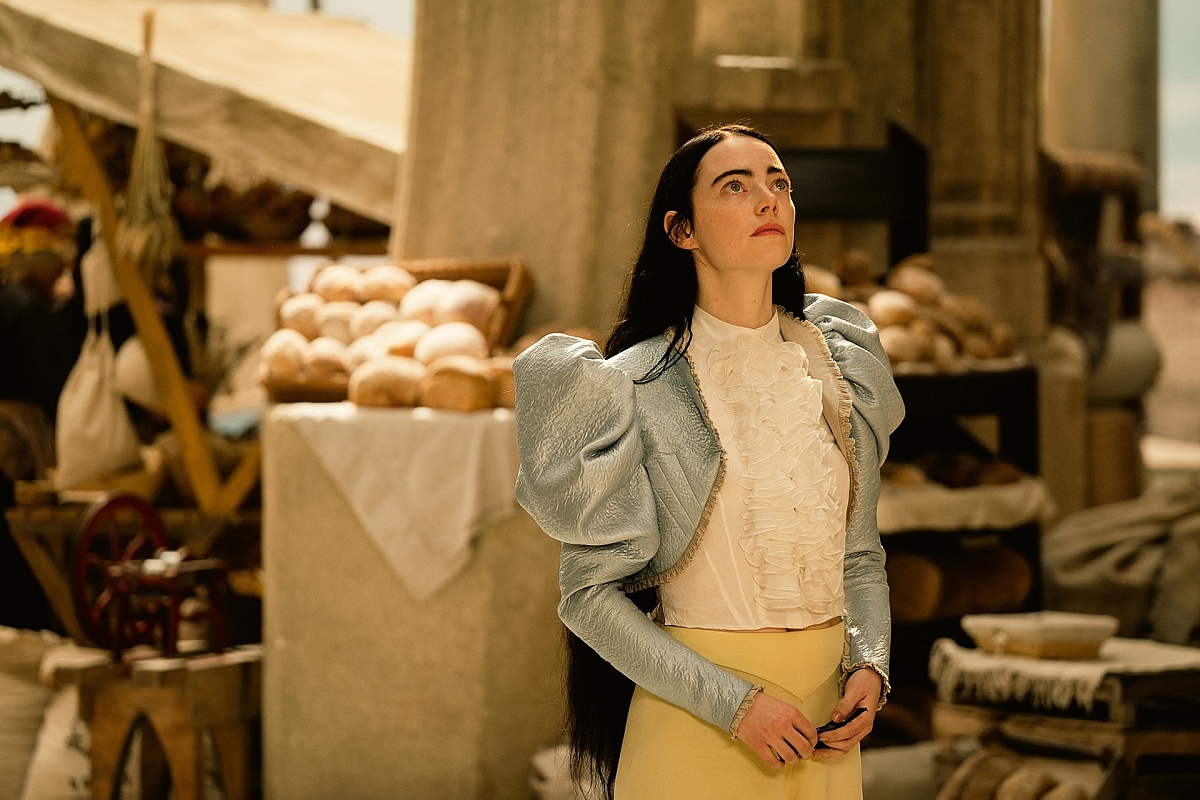
Emma Stone in POOR THINGS. Photo by Yorgos Lanthimos. Courtesy of Searchlight Pictures. © 2023 Searchlight Pictures. All rights reserved.
"It was really exciting to see the results that came back from [Cinegrell Berlin], which were skillfully managed by their contact person, Ludwig Draser," says Ryan. "The EKTACHROME footage had a color saturation and contrast that I've never seen with other daylight or tungsten motion picture filmstocks I have used before.
"The colors are invitingly rich and vivid, like vibrant reds that really bounce-off the screen, but it never looked cartoon-like. The blacks are really dense and contrasty, and the skin tones are true-to-life. It supported the otherworldly looks of the bold set and costume design and was a great way to visually depict the fantastical adventure Bella goes on. Yorgos absolutely loved the results that EKTACHROME delivered."
4K film scanning of all the different filmstocks was completed by Cinelab, along with the creation film print deliverables. The DI grade was performed by Greg Fisher at Company 3 in London, who Ryan says "was perfectly tuned into the look that Yorgos and I wanted, a real comrade, who showed great diligence and patience during the whole process."
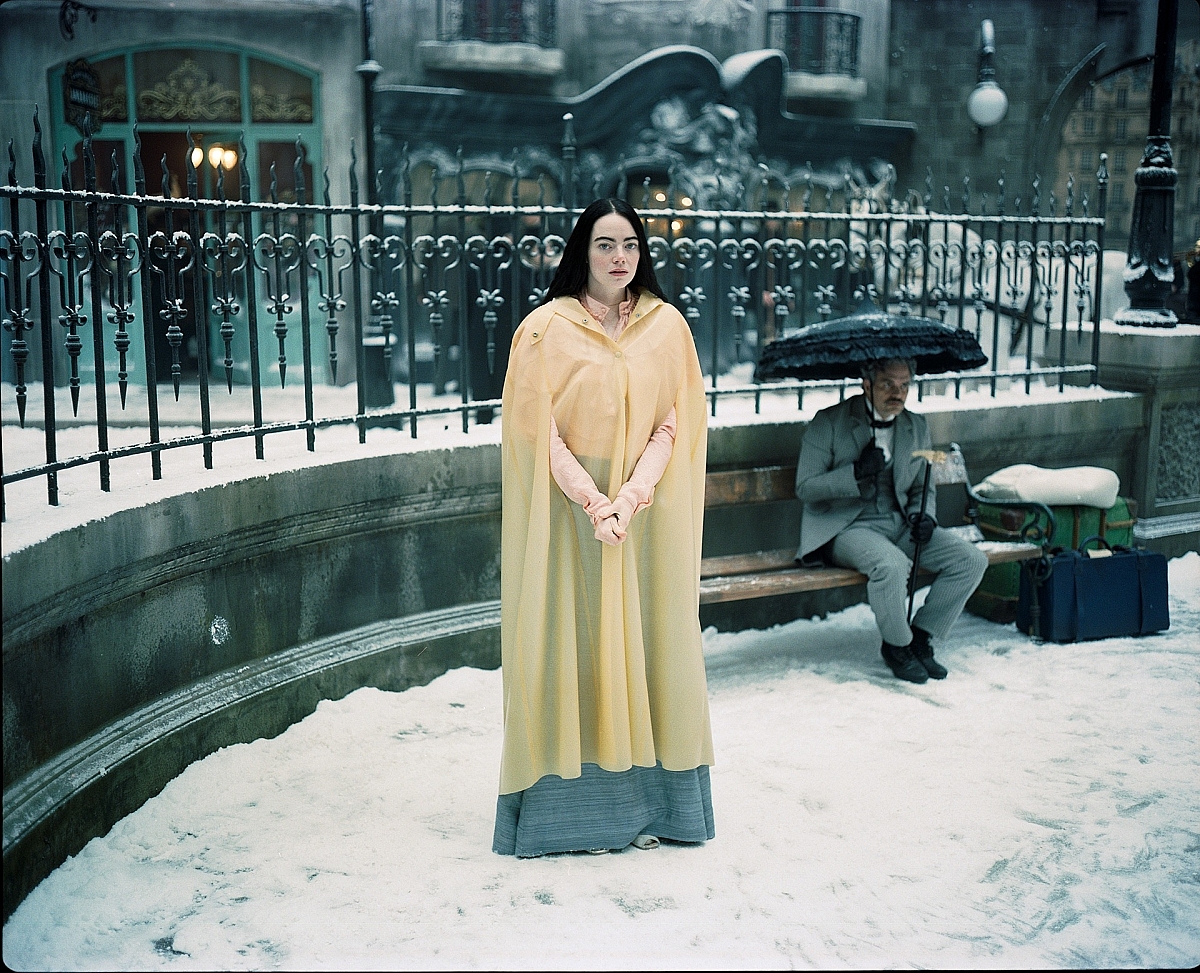
Emma Stone and Mark Ruffalo in POOR THINGS. Photo by Yorgos Lanthimos. Courtesy of Searchlight Pictures. © 2023 Searchlight Pictures. All rights reserved.
Ryan operated during what was mainly a single camera shoot, ably assisted by Olga Abramson as 1st AC, Cristina Cretu as 2nd AC, and camera trainee Ármin Szilágyi. Attila Szûcs led the grip team.
Ryan says that perhaps his biggest challenge came with crafting and shaping the light on the large and elaborate set, using more LED fixtures than he has been traditionally used to on other film productions. He was supported in this task by gaffer Andy Cole.
Ryan concludes: "I am so pleased that Poor Things continues to fight the good fight for film as a storytelling medium. Working with Yorgos is a learning curve every day. He likes to push the boundaries and is often quite extreme. There are not many directors who do what he does, and whether you like it or not, he always brings a different and interesting visual approach to his films. He has amazing taste in cinema, and his knowledge is vast. He really taps into that, and the world-building in Poor Things is really fresh, unusual and beautiful. The fun and enthusiasm he generated on set has definitely transferred to the screen."
Poor Things is in US cinemas from December 8 and UK cinemas from January 12